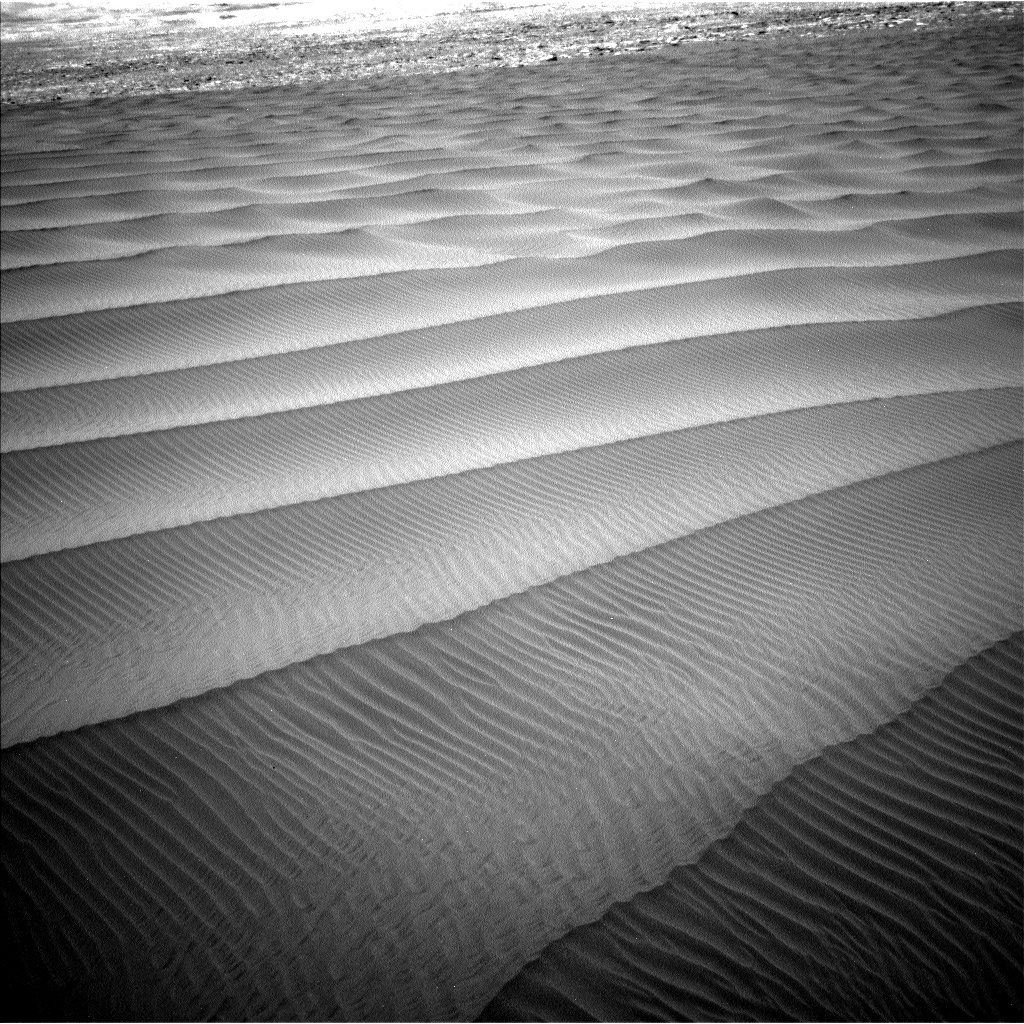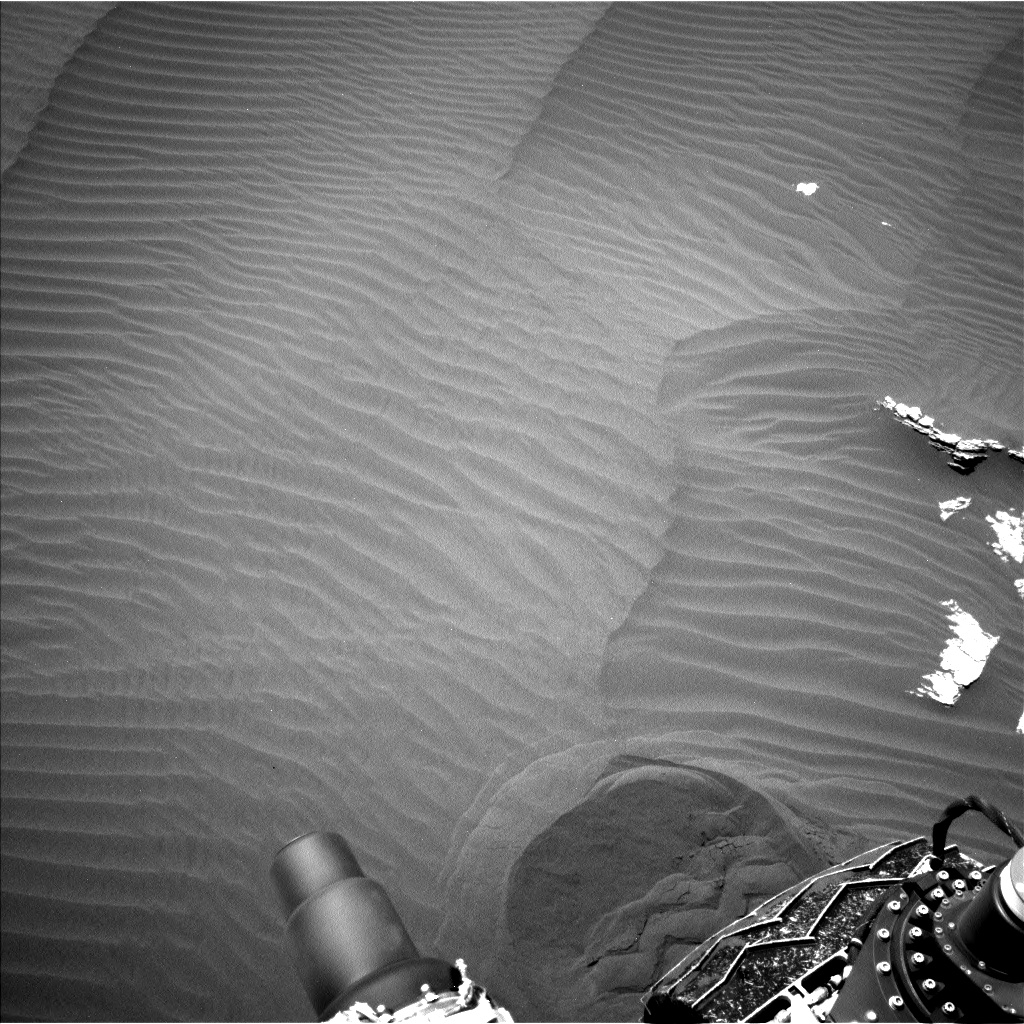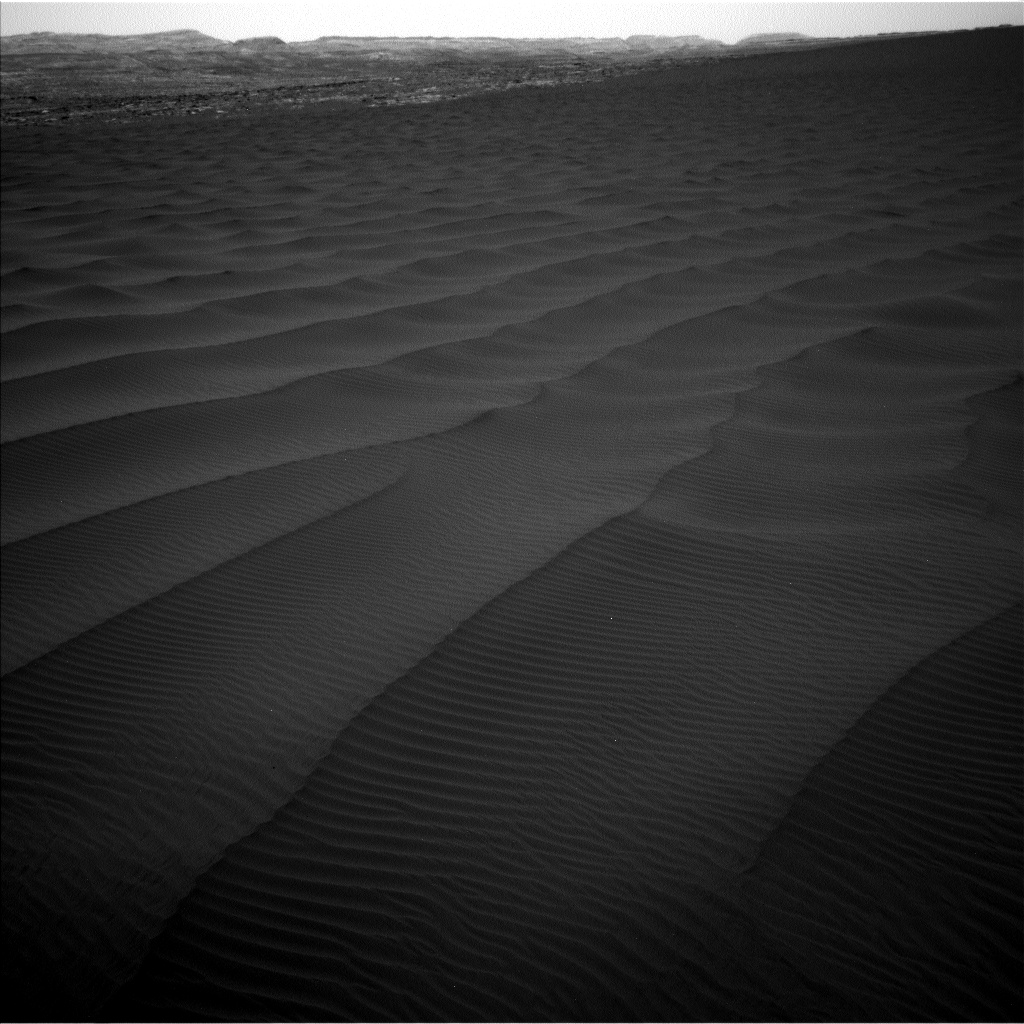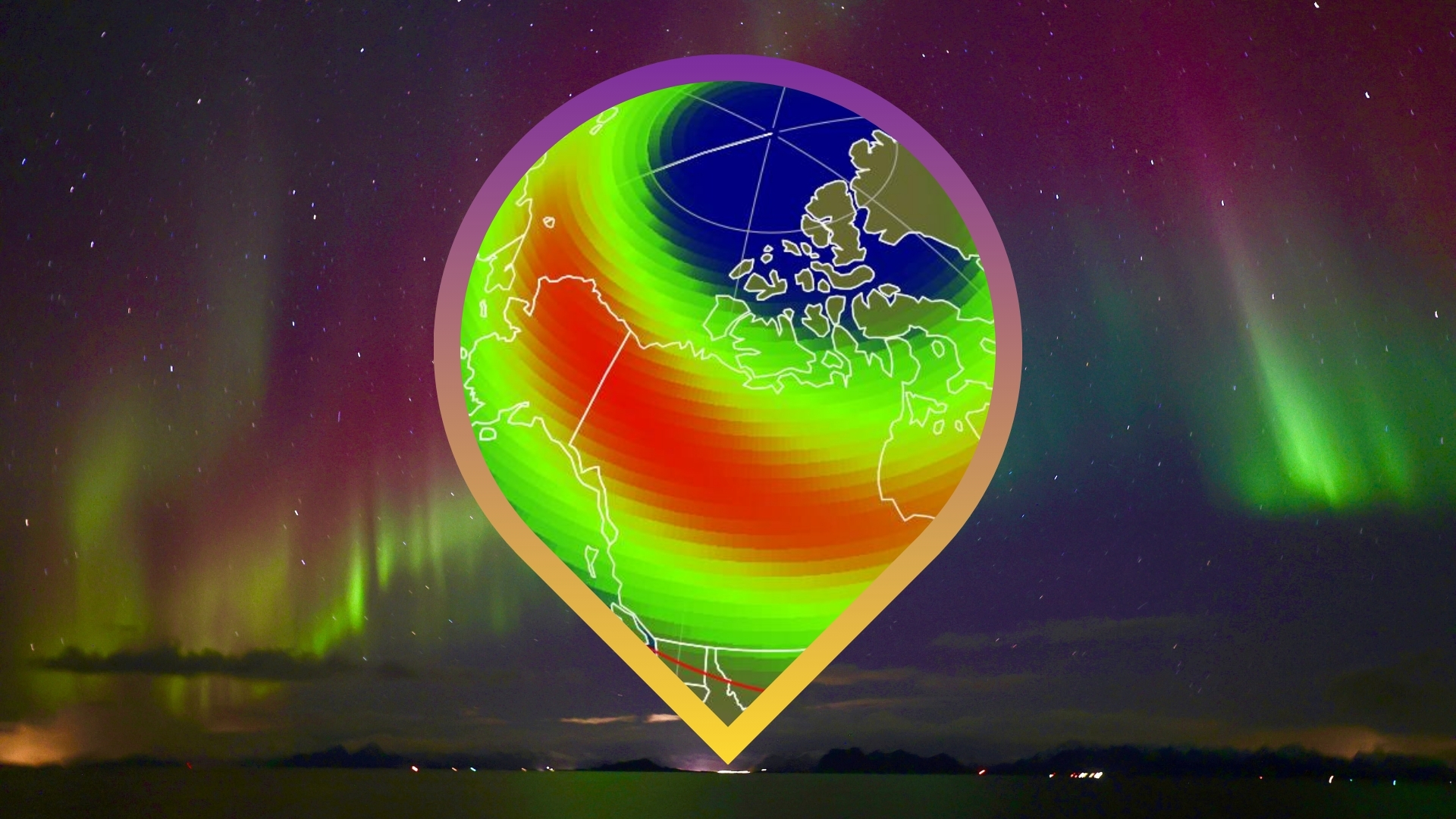Waves on Mars? Sand Ripples in Striking Red Planet Photos

Waves of sand on the parched surface of Mars, spotted by NASA's Curiosity rover, are reminiscent of ripples on the surface of a lake.
While there may have once been lakes, rivers and oceans on the surface of Mars, today the Red Planet is more parched than the driest deserts on Earth. (However, very salty liquid water is thought to exist in a few places on Mars.)
But new images from the Curiosity rover, released today (Feb. 6), show windswept stretches of sand that look like waves cresting on a body of water. The repeating ripples create a hypnotic pattern that stretches across the baked landscape.
Curiosity has been scuttling around on the surface of Mars since August of 2012. In that time, the little robot has explored beautiful and treacherous landscapes, and sent back images of all kinds of interesting surface features, including massive sand dunes and rocky outcrops.
The rover's primary mission is to evaluate whether Mars may have once had an environment that could support life. In Curiosity's first two years on the surface, the rover found ample evidence that Mars once supported large bodies of water, a necessary ingredient for life as we know it.
Follow Calla Cofield @callacofield.Follow us @Spacedotcom, Facebook and Google+. Original article on Space.com.
Breaking space news, the latest updates on rocket launches, skywatching events and more!

Calla Cofield joined Space.com's crew in October 2014. She enjoys writing about black holes, exploding stars, ripples in space-time, science in comic books, and all the mysteries of the cosmos. Prior to joining Space.com Calla worked as a freelance writer, with her work appearing in APS News, Symmetry magazine, Scientific American, Nature News, Physics World, and others. From 2010 to 2014 she was a producer for The Physics Central Podcast. Previously, Calla worked at the American Museum of Natural History in New York City (hands down the best office building ever) and SLAC National Accelerator Laboratory in California. Calla studied physics at the University of Massachusetts, Amherst and is originally from Sandy, Utah. In 2018, Calla left Space.com to join NASA's Jet Propulsion Laboratory media team where she oversees astronomy, physics, exoplanets and the Cold Atom Lab mission. She has been underground at three of the largest particle accelerators in the world and would really like to know what the heck dark matter is. Contact Calla via: E-Mail – Twitter


